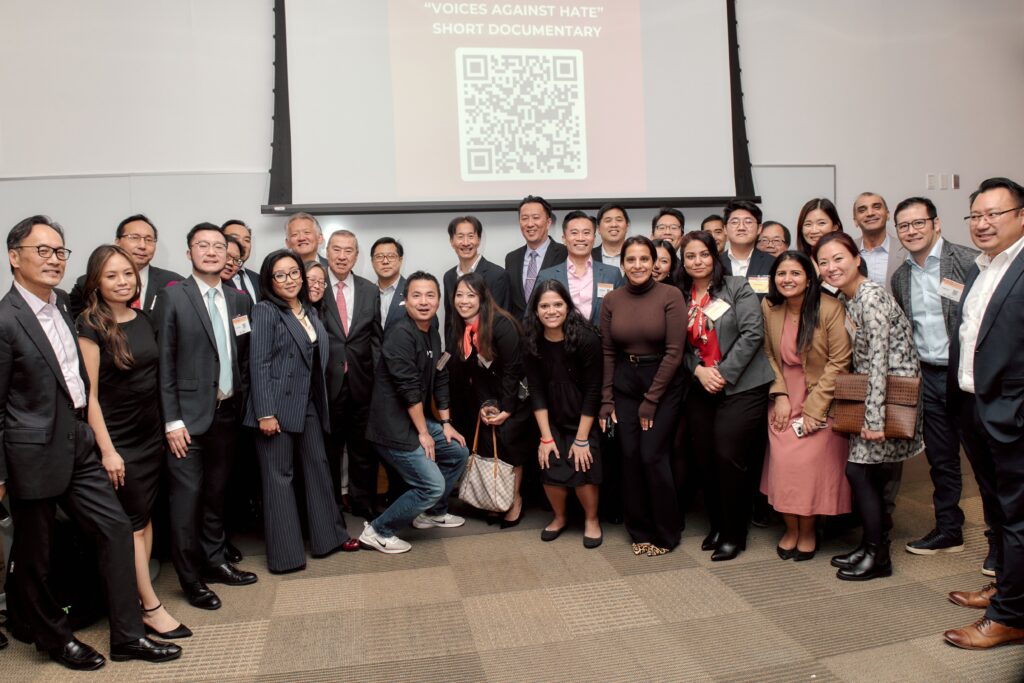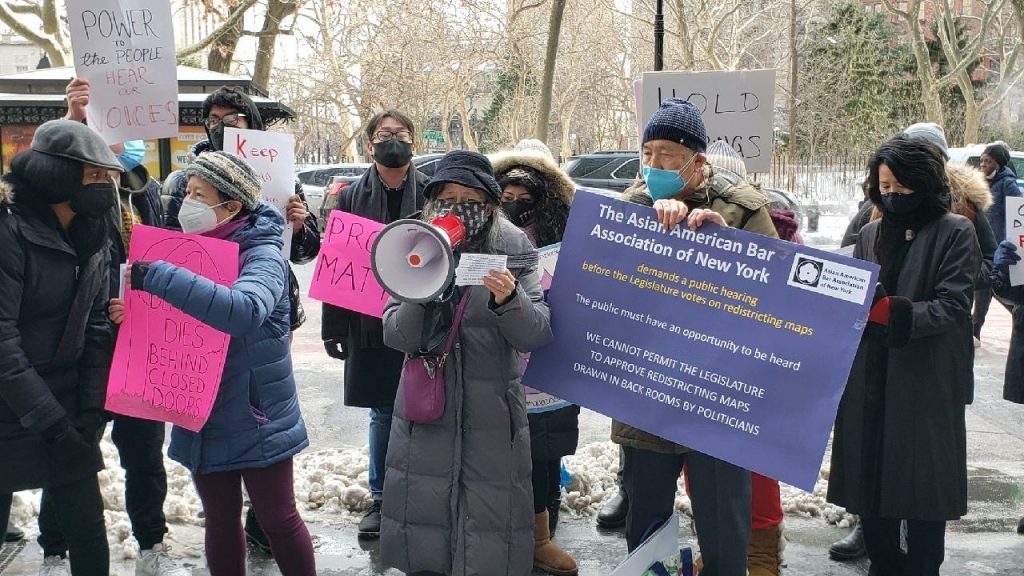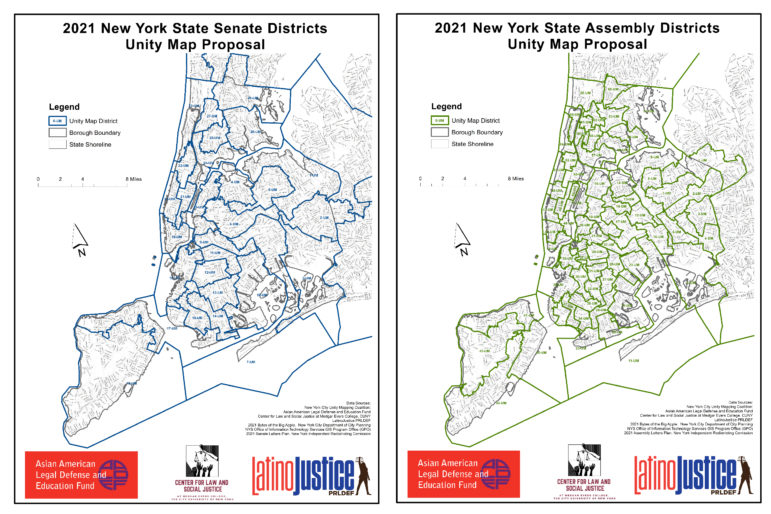On Saturday, October 12, 2024, AABANY hosted its 15th Annual Fall Conference, “Building a Strong Foundation for a Brighter Future,” at Fordham University of Law. The Conference was co-sponsored by Fordham Law School’s Center on Asian Americans and the Law, and AABANY greatly appreciates Fordham’s support of this event.
The conference began with a buffet-style breakfast. Attendees chatted over pastries, coffee, bagels, and other assorted breakfast items, reconnecting with colleagues, while also introducing themselves to unfamiliar faces.

The first part of the morning programs began at 9:00am and ran until 10:30am, presenting upon a diversity of topics, including:
- Artificial Intelligence in the Legal Profession: Transforming Practices and Future Trends
- How to Build Successful Licensing Programs: Licensing Strategies for Emerging Businesses
- Navigating Legal Challenges in Biotech Investment: Building a Resilient Framework
- Trial by Media: Strategies on Winning Your Trial with the Public
This year’s conference theme was “Building a Strong Foundation for a Brighter Future,” and the morning programs explored this topic in great detail. “Problem-Solving Courts and Person-Centered Justice,” for example, discussed the emergence and proliferation of problem-solving courts within the New York judiciary, their impacts on recidivism, and the judiciary’s vision to further expand the breadth of problem-solving courts within New York. Another program, “Artificial Intelligence in the Legal Profession: Transforming Practices and Future Trends,” considered the impact of AI and Generative AI on the legal profession. By promoting innovation, adaptability, and responsible use of AI, the program sought to foster a forward-thinking legal community.
After a 15 minute break, the second part of the morning programs, scheduled between 10:45am and 12:15pm, commenced, exploring the following topics:
- Pathways to the Bench: Steps to the Federal Judiciary
- Problem-Solving Courts and Person-Centered Justice
- Responding Today to Workplace Injustice for AAPI Americans
- Spill the Beans! Get Witnesses Talking and Crack the Code of Internal Investigations
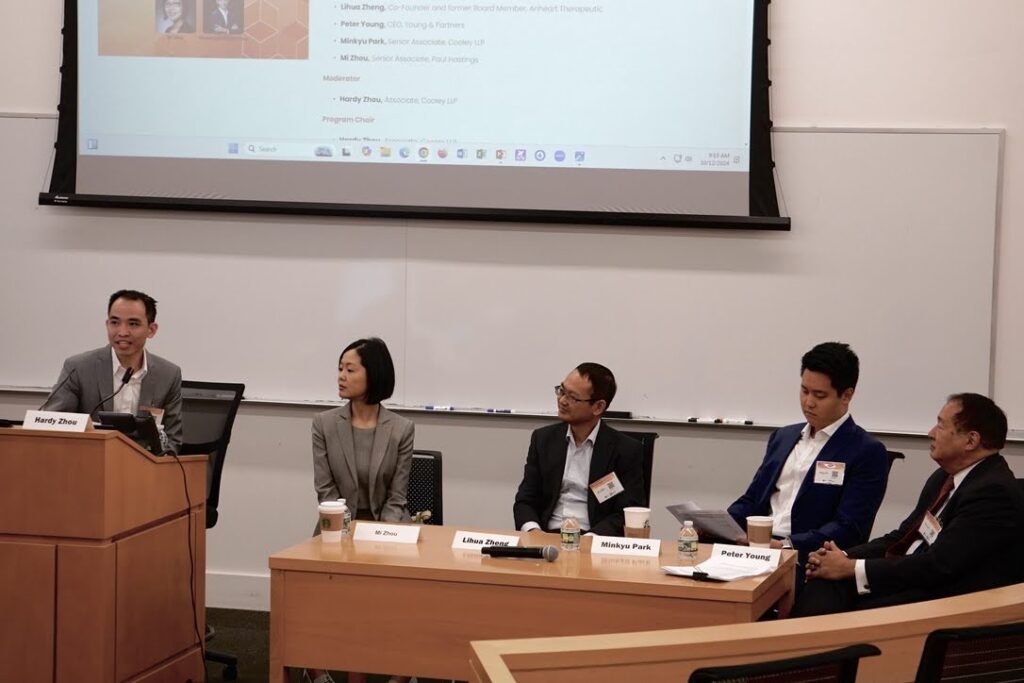

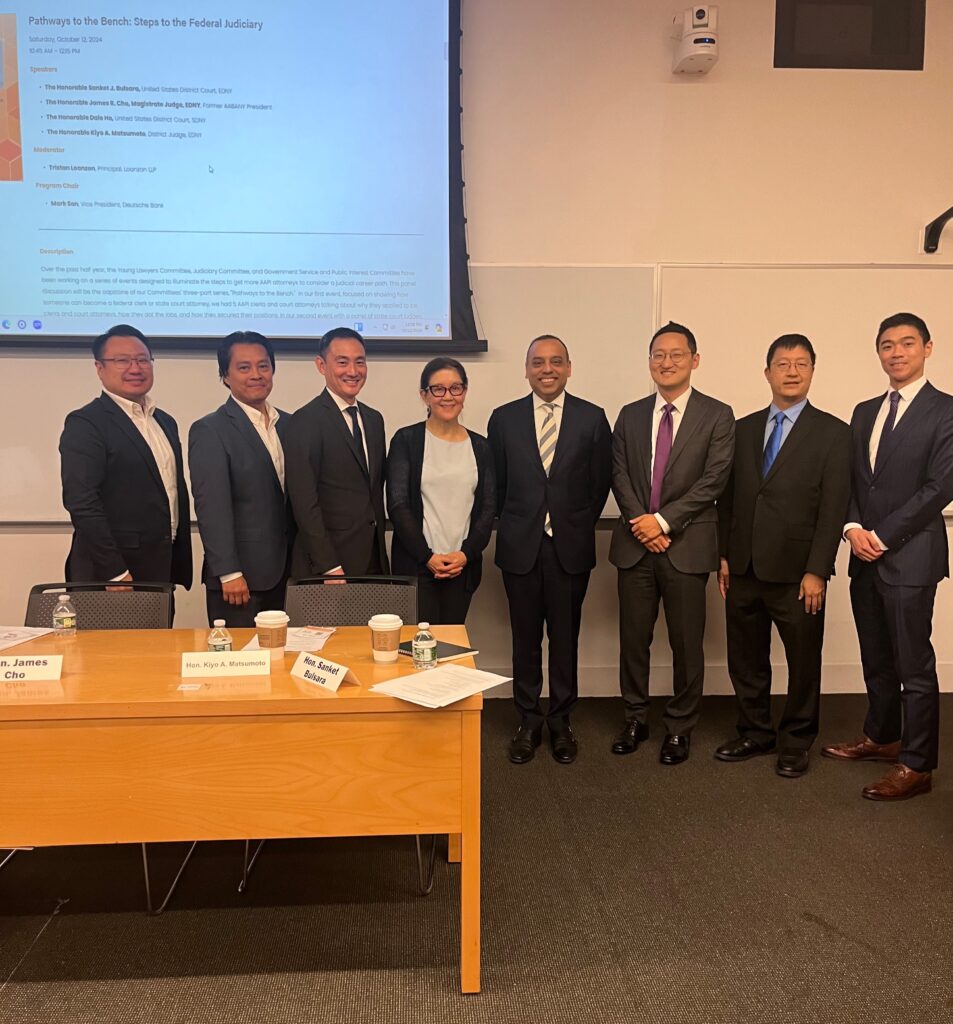
The third and final installation of AABANY’s “Pathways to the Bench” series, coordinated by the Young Lawyers Committee, Judiciary Committee, and Government Service and Public Interest Committee, was also held during the latter half of the morning session. While the first two segments of the series had focused on showing how someone can become a federal clerk or state court attorney and explaining the nuances of landing on the bench, this capstone program, titled “Pathways to the Bench: Steps to the Federal Judiciary,” centered around four AAPI judges, who each shared their particular pathways to the bench, hoping to inspire others to follow in their footsteps and to give them the tools to do so.
To see photos from the morning session please click here.
Opening at 10:30am, the Fall Conference offered its annual Diversity Career Fair, organized by the Career Advancement Committee, featuring public sector, corporate, and law firm employers, each hosting informational sessions, meet-and-greets, and more. Participating employers included the Law Firm of Hugh H. Mo, P.C., the Office of the New York State Attorney General, Rupp Pfalzgraf LLC, the U.S. Securities and Exchange Commission, and several District Attorneys’ offices. Employers and prospective employees conversed extensively, exchanging questions and learning more about one another. Some employers also collected resumes and conducted on-site first round interviews, allowing candidates to express their interest in working for participating employers. To see photos from the Diversity Career Fair, please click here.
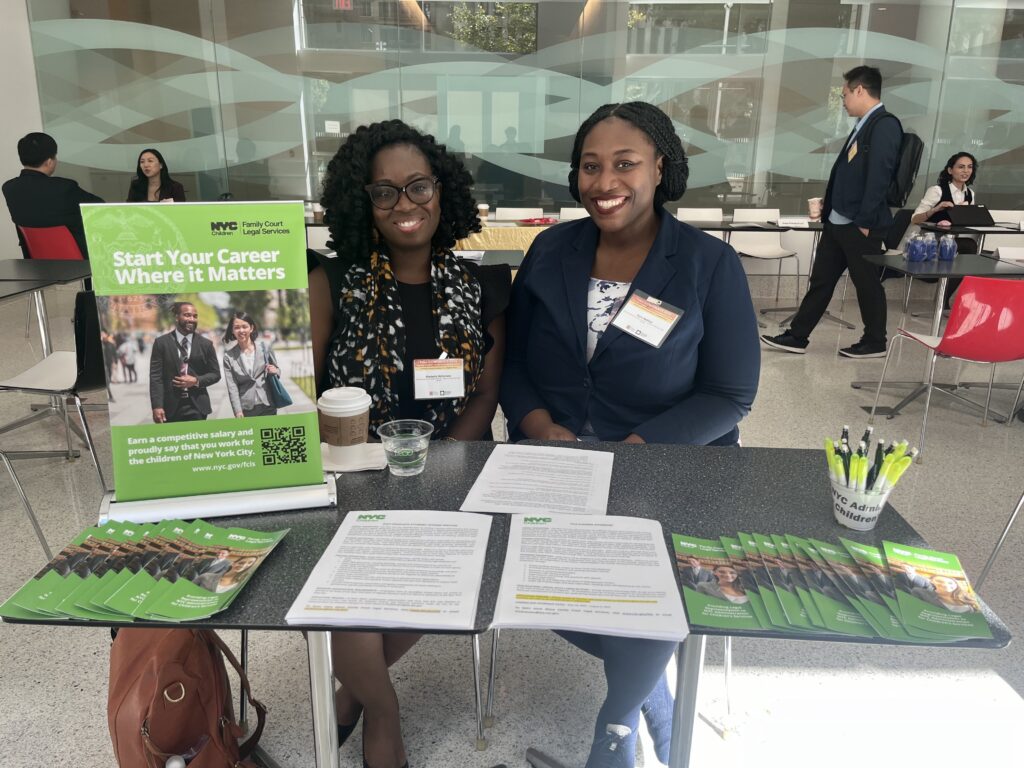

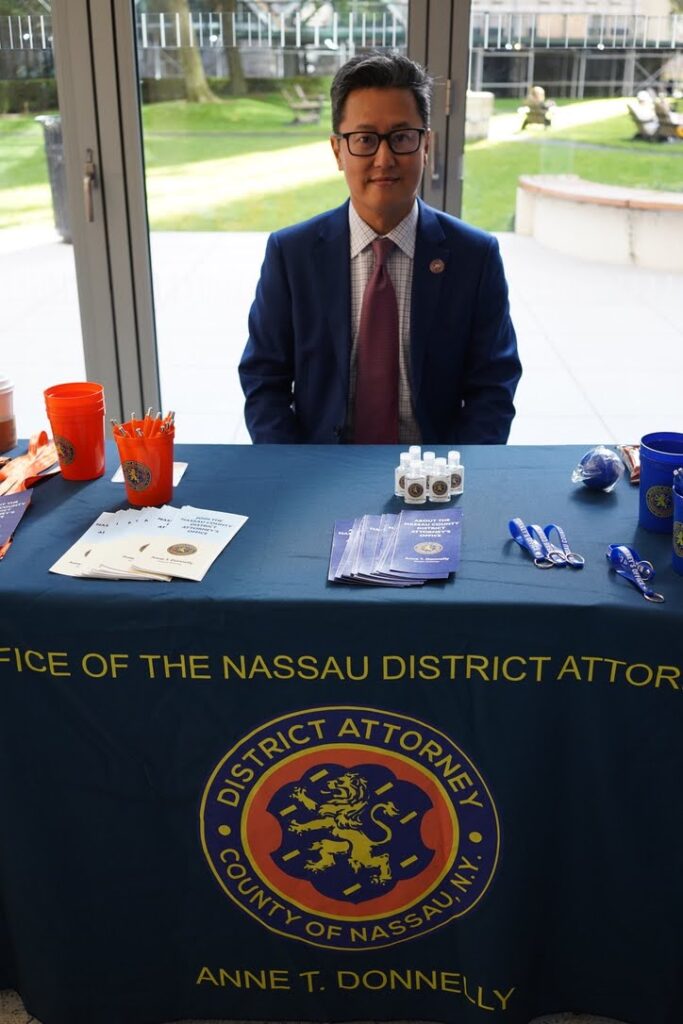
Throughout the day, AABANY also hosted Link-Up Sessions, organized by the In-House Counsel Committee and Corporate Law Committee, which provided an opportunity for participants to engage in live meetings with in-house counsel who had indicated a current or future need for outside legal services. Applicants were pre-screened by in-house counsel based on their needs, and selected participants were then invited to join one or more Link-Up Sessions at the Fall Conference. These sessions facilitated connections between corporate law firm attorneys and in-house counsel.
After the morning programs concluded, attendees grabbed lunch boxes and headed to the Costantino Room, where the Plenary Lunch Session began at 12:30pm. The program, titled “Organizing to be Heard: The Importance of Redistricting and Coalition Building in the NYC Asian American Community,” featured five speakers:
- Hon. Marilyn D. Go (Ret.), Commissioner, New York City Districting Commission
- Zohran Kwame Mamdani, Assemblymember, New York State Assembly
- Elizabeth R. OuYang, Coordinator, APA VOICE Redistricting Task Force
- Grace Pyun, Acting Executive Director and General Counsel, New York City Districting Commission
- John Park, Executive Director, MinKwon Center
Vishal Chander, Managing Attorney, the Chander Law Firm PC, moderated this timely and important discussion.
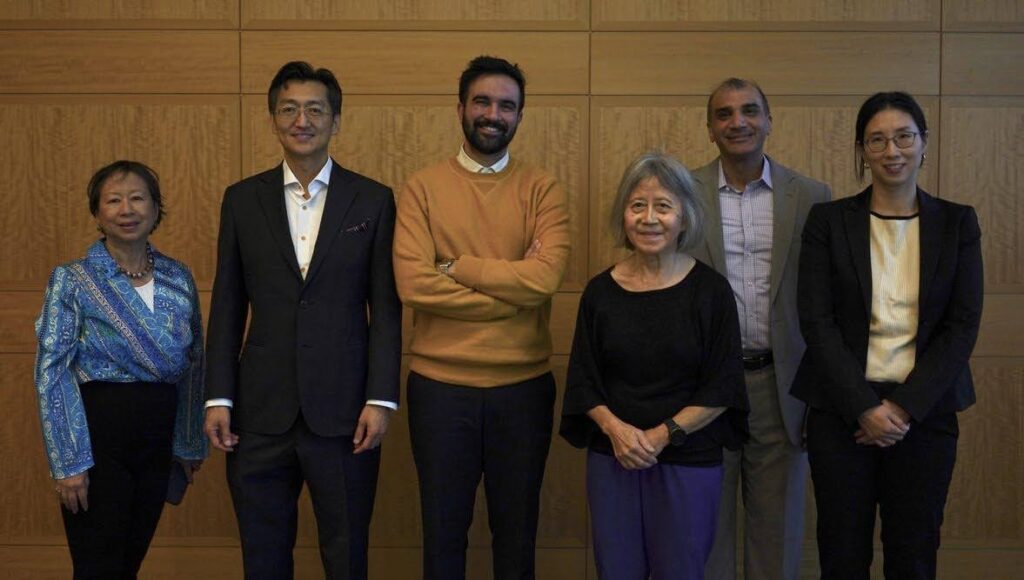
Attendees listened attentively as the panelists discussed the impacts of congressional, state, and local district lines on communities, ranging from their influence on election results to the distribution of government funds. They then discussed the 2020 Redistricting Cycle and how it brought into attention the importance of redistricting due to the significant growth of Asians in New York, laying out the legal framework of districting and the impacts of voting rights laws on redistricting. Being that many of the panelists played influential roles within the 2020 Redistricting Cycle, they also shared personal anecdotes and experiences from that time. With preparations for the 2030 Redistricting Cycle beginning soon, the speakers emphasized the importance of continuing to educate the community on this topic and how the AAPI community can be heard in that process. To see photos from the Plenary Lunch Session, please click here.
The afternoon session began at 2:30pm, running in two segments. The first segment went from 2:30pm to 4pm and included the following programs:
- Challenging Microaggressions and Other Bias with Psychological Safety and Inclusive Leadership
- General Counsel Roundtable
- Pathways to the Legal Academy
- The Initial Consultation – Building on Your Client Interviewing Skills
The second segment then took place from 4:15pm to 5:45pm, including the following programs:
- Demystifying DE&I – Navigating Expectations Versus Reality for DE&I in the Legal Profession
- Have Your Cake and Eat It Too – Liability Management – A Legal Framework for Business Outcomes
- Securing Your Cyberspace to Protect Your Legal Future
- Understanding Public Company Proxy Mechanics: Best Practices for Annual/Special Meeting Preparation and Execution
Topics covered included diversity, equity, and inclusion within the legal profession, how to interview clients, and how to understand implicit biases in the workplace. These programs exemplified the diversity of discourse that the Fall Conference sought to facilitate, providing crucial insights and exposing attendees to a broad range of ideas and perspectives. To see photos from the afternoon session, please click here.

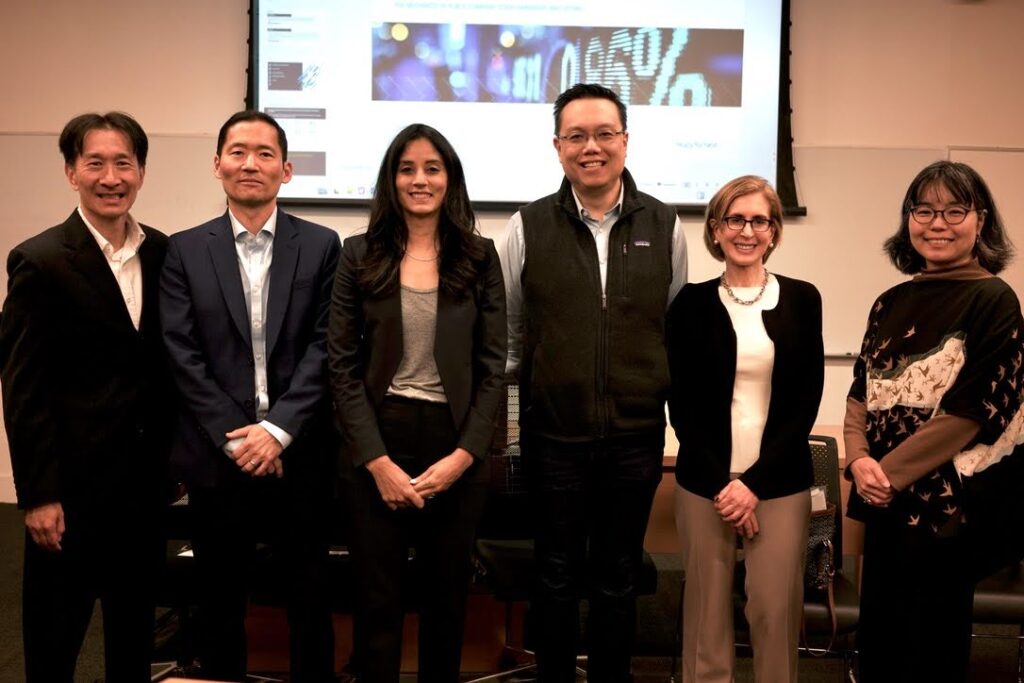

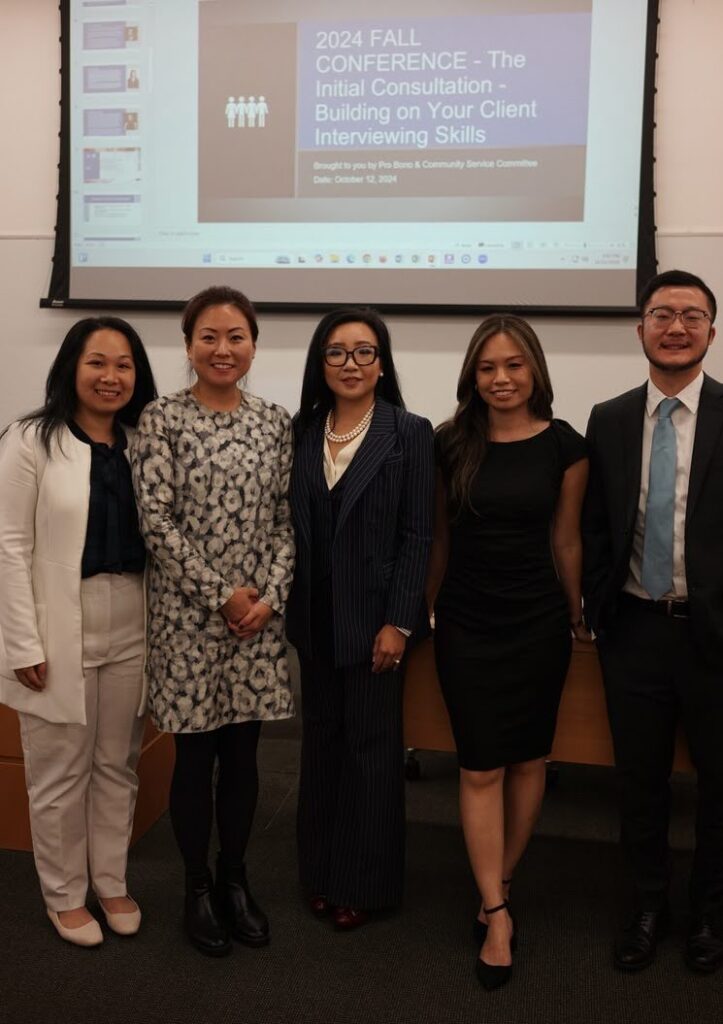
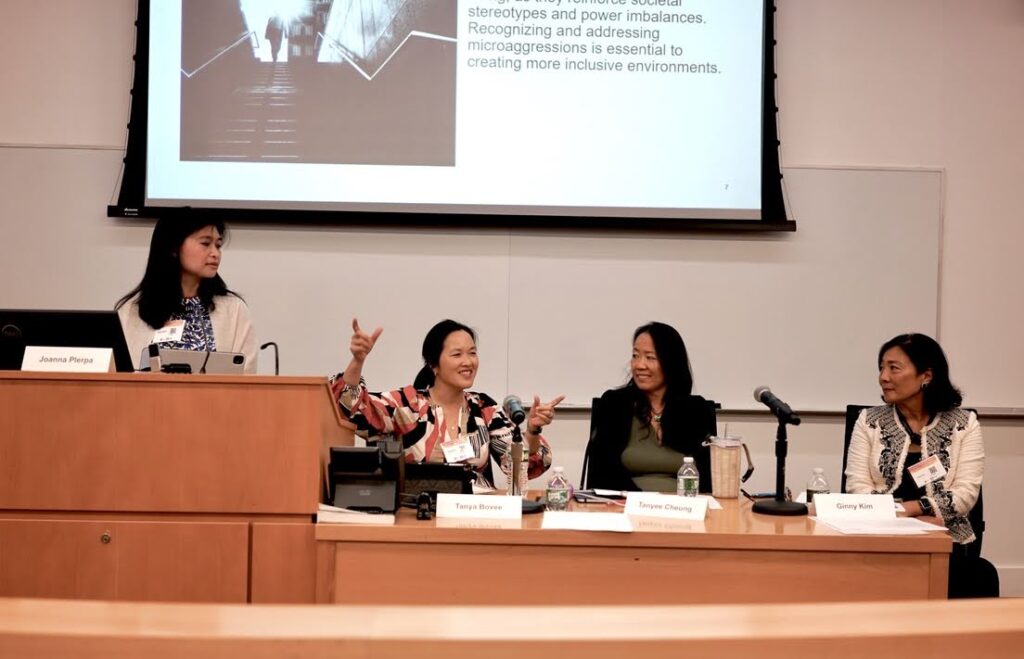
After a packed day of learning, the Fall Conference concluded with a Cocktail Reception, sponsored by Falconeri, held in the Soden Lounge and Bateman Room. Attendees networked with one another, connecting over drinks and hors d’oeuvres.
During the Cocktail Reception, AABANY honored Hugh H. Mo with the 2024 Norman Lau Kee Trailblazer Award, bestowed annually to “an individual who has carved a path for others to follow, served the community as a mentor and role model, and made a lasting impact on the AAPI community through his or her dedication and commitment.” Hugh H. Mo, Founder and Principal of Mo Law and a co-founder of AABANY, perfectly exemplifies the award’s mission, having been a leader in the AAPI community and legal profession for nearly five decades. To read the full press release about Mr. Mo receiving this honor, please click here.
To see photos from the Cocktail Reception, go here and here.
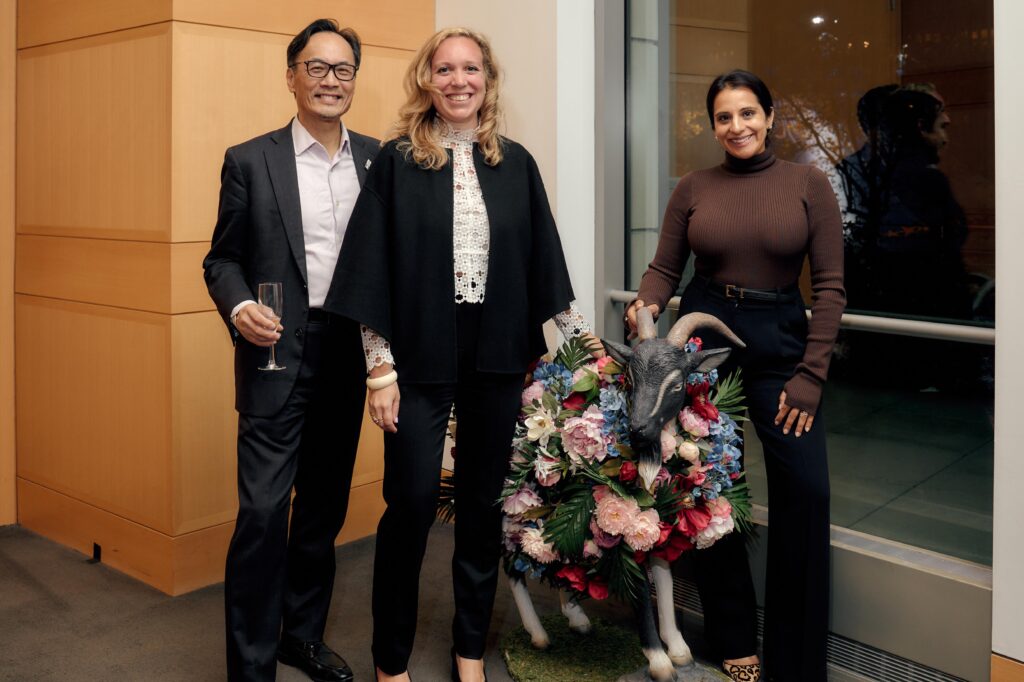

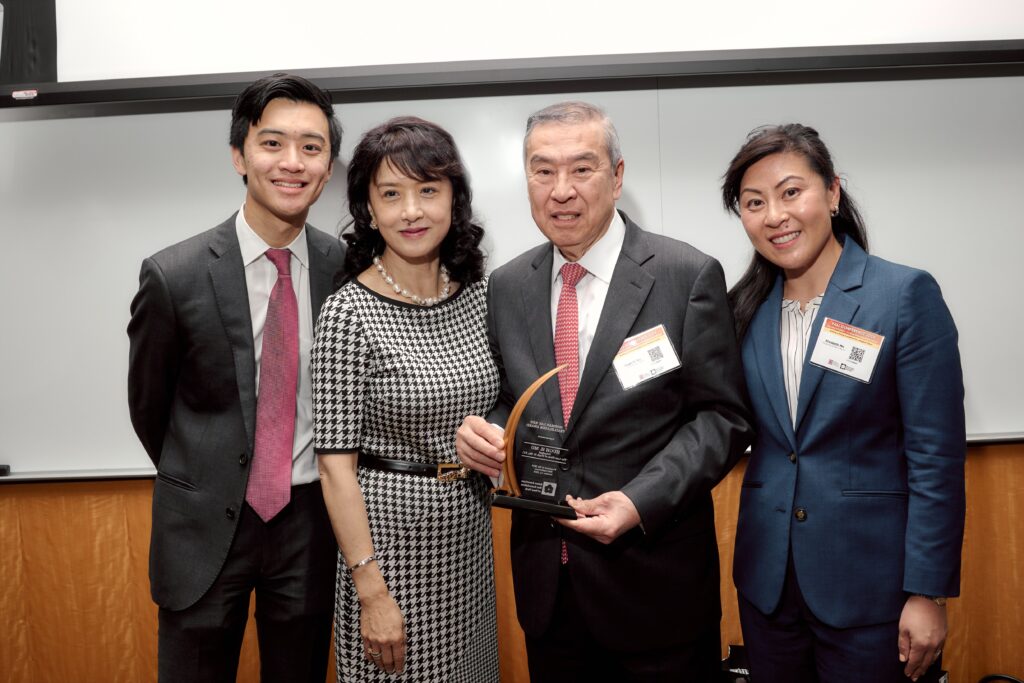
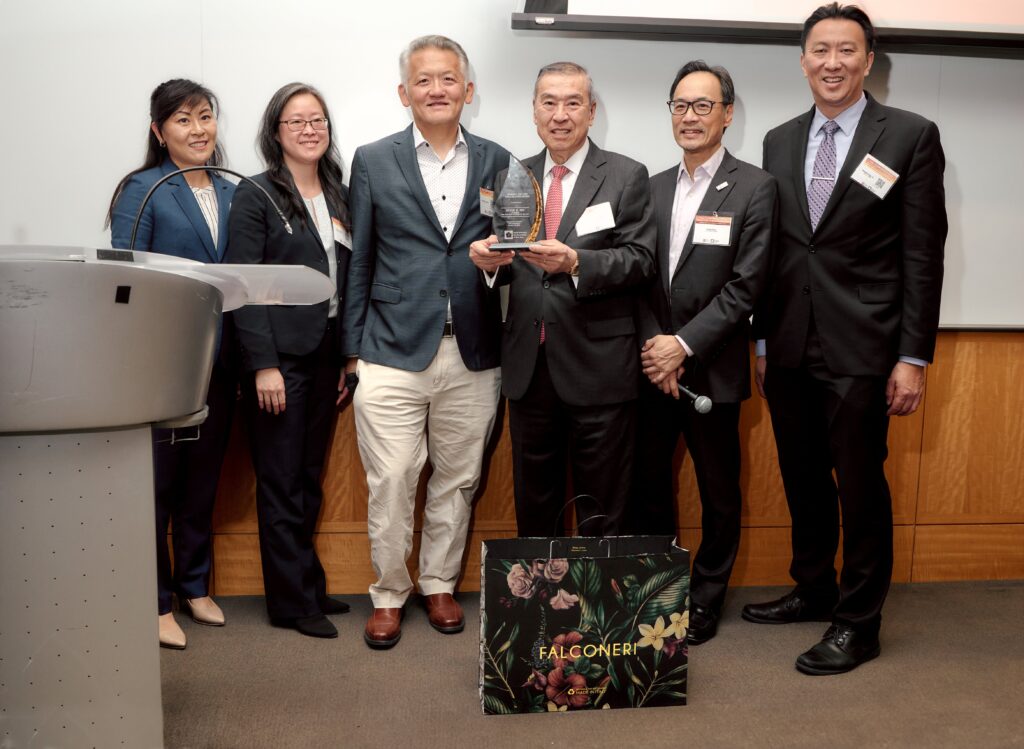
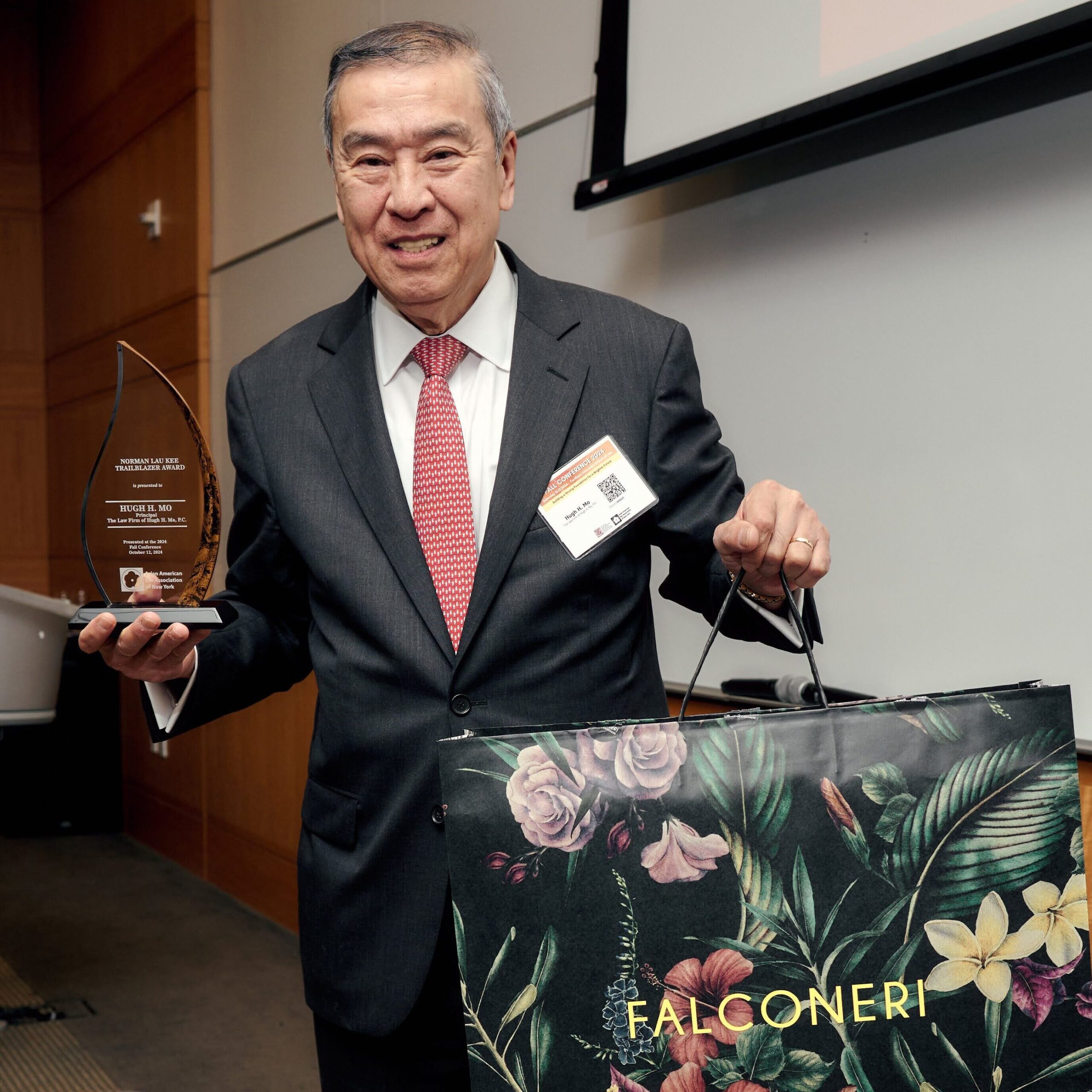
AABANY thanks several groups for making the Fall Conference possible. First, we would like to thank the approximately 40 student volunteers who ensured that the CLE programs ran smoothly and without delay. They hailed from schools all across New York City and the northeast region, including:
- Brooklyn Law School
- Cardozo School of Law
- Columbia Law School
- CUNY School of Law
- Fordham College at Lincoln Center
- Fordham School of Law
- Hunter College
- New York Law School
- Northern Highlands Regional High School
- Rutgers Law School
- Seton Hall Law School
- St. John’s University School of Law
- Syracuse University College of Law
- Tufts University
The volunteers assisted with registration, handled inquiries, and checked-in and checked-out attendees for CLE credits. Their support was instrumental in making the Fall Conference a success, and AABANY extends our heartfelt appreciation. We also thank Catherine Tran and Joon Choe, co-chairs of the Student Outreach Committee, for their efforts in recruiting and coordinating these volunteers.
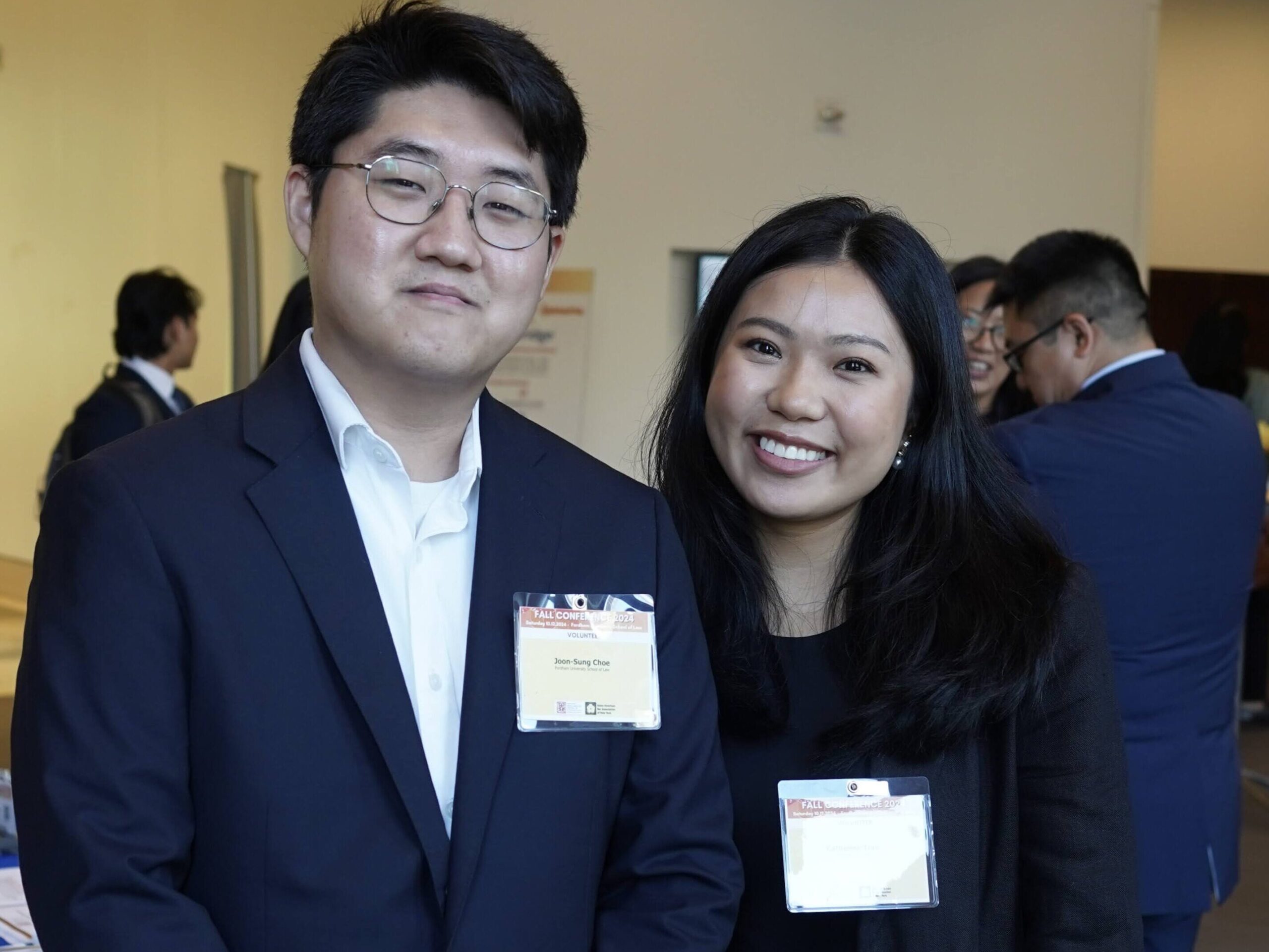

AABANY also thanks our generous sponsors, without whom the Fall Conference would not have been possible:
- Falconeri (Cocktail Reception Sponsor)
- Broadridge Financial Solutions (Elite Sponsor)
- Jackson Lewis PC (Elite Sponsor)
- Cadwalader, Wickersham & Taft LLP (Gold Sponsor)
- The Law Firm of Hugh H. Mo, P.C. (Gold Sponsor)
- Anytime AI (Silver Sponsor)
- Bryan Cave Leighton Paisner (Silver Sponsor)
- Cooley LLP (Silver Sponsor)
- Fish & Richardson P.C. (Silver Sponsor)
- Milbank LLP (Silver Sponsor)
- Anderson & Associates Law, P.C. (Bronze Sponsor)
- Roundblock (Bronze Sponsor)
- Rupp Pfalzgraf LLC (Bronze Sponsor)
- Wilson Sonsini Goodrich Rosati (Bronze Sponsor)
To see some photos of our sponsors, go here.
We would also like to acknowledge our 2024 Annual Dinner Sponsors for their generous year-round support of AABANY. In particular, we would like to recognize Broadridge Financial Solutions, our Diamond Sponsor, and Groombridge, Wu, Baughman & Stone LLP, our General Counsel Reception Sponsor. For a full list of the 2024 Annual Dinner Sponsors, please click here. Thanks again for your continued support and commitment to AABANY; it empowers us to fulfill our mission and produce events like the Fall Conference.
Furthermore, AABANY thanks all of our esteemed moderators and panelists for their time and participation in this year’s Fall Conference. We also extend our gratitude to the Program Chairs for organizing such an excellent lineup of programs. And, finally, we sincerely appreciate all the attendees for making this such a special and enlightening experience for the entire AABANY community. We hope to see you at upcoming AABANY events.
